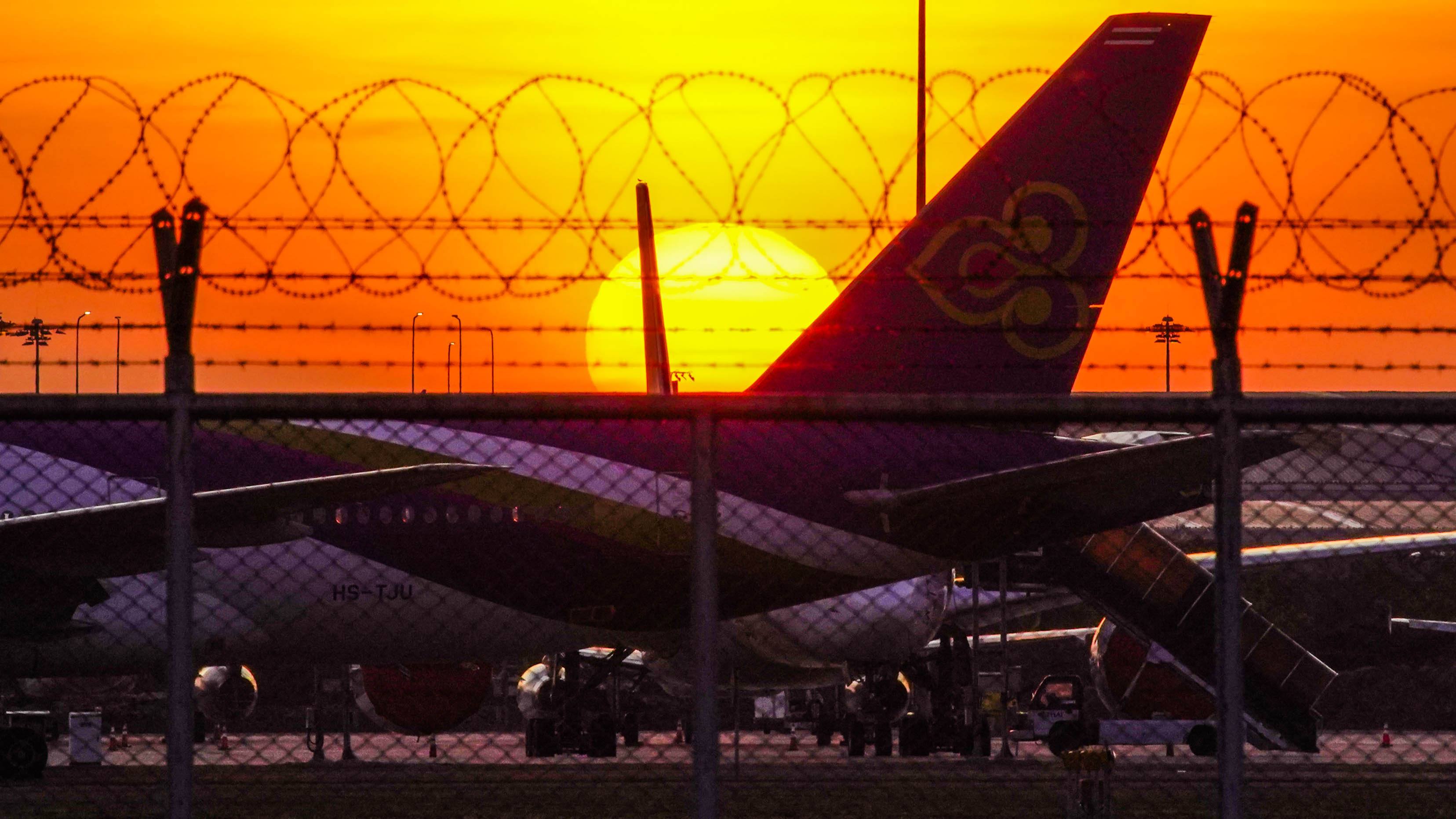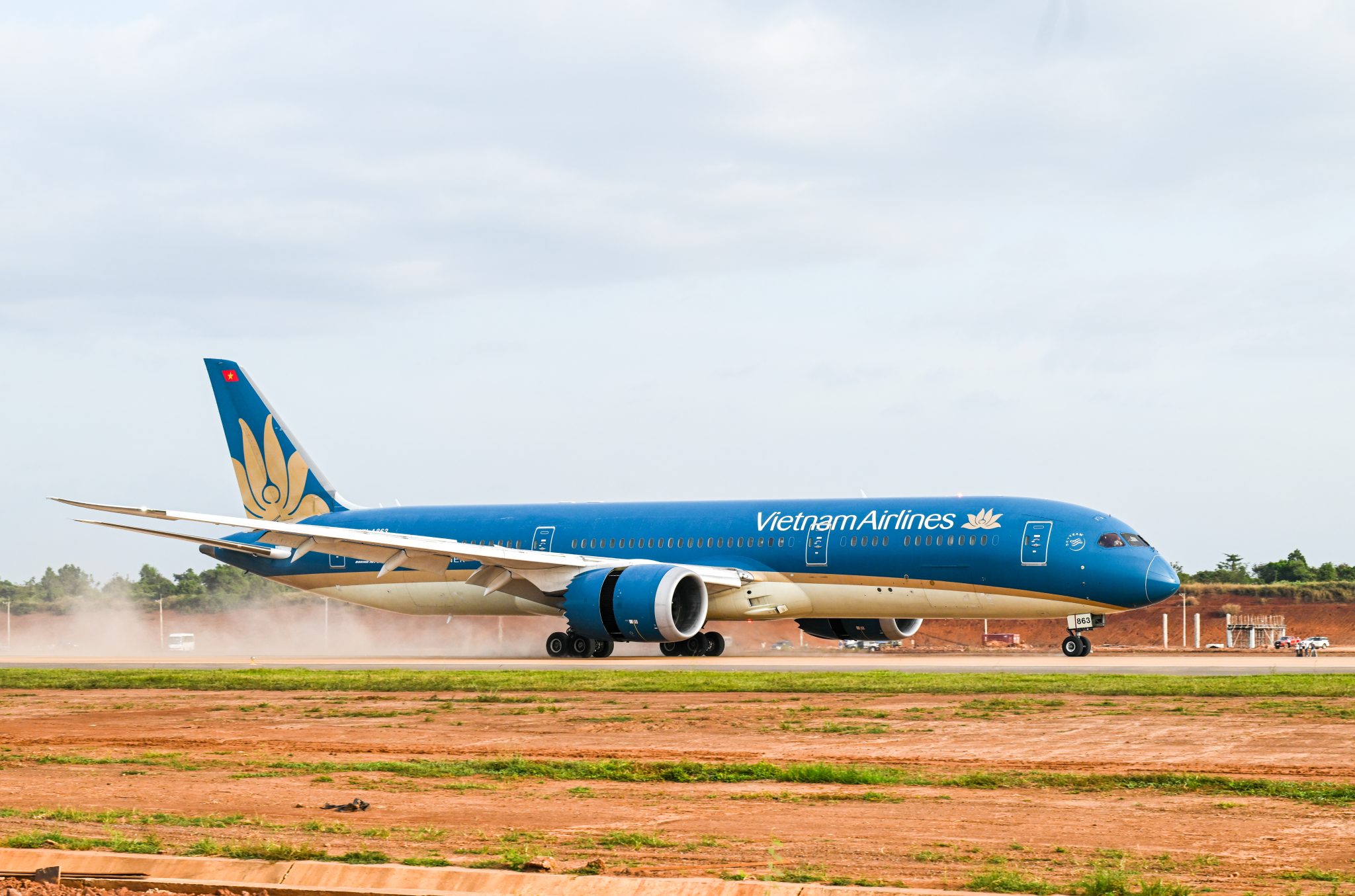While carriers attempt to weather the storm by launching a series of restructuring plans, governments are considering bailing them out to protect national interests. Some operators have also come up with unique business ideas in pursuit of new revenue streams.
Here are five things to know to get the current picture of the aviation industry in Asia, where the pandemic originated.
 Thailand’s flag carrier Thai Airways International filed a petition for rehabilitation in May after years of losing money. (Photo: Akira Kodaka)
Thailand’s flag carrier Thai Airways International filed a petition for rehabilitation in May after years of losing money. (Photo: Akira Kodaka)
How badly are airlines suffering?
The pandemic, which forced airlines to ground almost all their aircraft earlier this year, is still tormenting many of them and causing them to rationalize their businesses.
Japan’s ANA Holdings last week said it expected to post 510 billion yen ($4.8 billion) of net loss this fiscal year through March, its worst-ever net loss and nearly 10 times greater than the hit the airline took after the global financial crisis. Under its restructuring plan, ANA plans to reduce more than 10% of its total aircraft fleet, while its routes will be reorganized to be more complimentary with budget carrier subsidiary Peach Aviation.
Hong Kong flag carrier Cathay Pacific Airways said last month it would cut 8,500 jobs, or 24% of the group’s total workforce, to cope with the grounding of most of its passenger flights, and shutting its regional subsidiary Cathay Dragon. Singapore Airlines, meanwhile, said in September it would cut around 4,300 positions under the expectation that it would operate at less than 50% of its pre-pandemic capacity until at least March.
The situation is also severe for low-cost carriers. AirAsia reported a net loss of 1.8 billion ringgit ($433 million) for the first half of this year. The Malaysia-based budget carrier also announced the cessation of AirAsia Japan, after three years of operations.
When will flight demand return?
This is still unclear as it depends largely on how long it will take for the global containment of COVID-19. But airlines in China seem to have found the light at the end of the tunnel from a recovery in the domestic economy.
China’s big three state-owned carriers — China Southern Airlines, China Eastern Airlines and Air China — all reported higher domestic passenger counts in September compared with a year earlier, the first rise since December last year. China Southern, which has taken its place as the world’s largest airline by seat capacity according to travel data provider OAG’s latest weekly update, reported its first quarterly net profit Friday since the pandemic hit.
Markets with significant domestic travel demand, including South Korea, Japan and Vietnam, are navigating the crisis better than those which rely on international travel. South Korea’s Korean Air managed to report an operating profit in the second quarter of 2020, helped by its cargo operations, which nearly doubled its revenue and offset a plunge in passenger revenue.
The International Air Transport Association said global air traffic would not return to pre-COVID levels until 2024. The industry trade group expects full-year 2020 traffic to be down 66% compared to 2019.
“In the first quarter of this year, there was an assumption that things would get better by at least six months and at worst by the end of 2020. That’s not the case,” said Peter Harbison, chairman emeritus of aviation research company CAPA at an online conference last month. “It’s quite clear that it’s going to take another six months, or even more, to [have] recognition of an industry that we used to know.”
Are governments offering any support to airlines?
Like in the U.S. and Europe, many carriers in Asia have received a government bailout to get through the pandemic. But at the same time, airlines are considering what is the appropriate balance of support to accept, as they intend to leave some space to make their own decisions.
Cathay Pacific not only secured a $5 billion bailout plan from the Hong Kong government in June, but it also accepted subsidies from the government under the first phase of the pandemic-related Employment Support Scheme, which requires recipients to safeguard jobs. However, the carrier refrained in September from applying for the second round of the program, as it undergoes job cuts.
Singapore Airlines is raising funds to stay afloat through the sale of shares and convertible bonds of up to 15 billion Singapore dollars ($10.8 billion) to the airline’s biggest investor, state-owned Temasek Holdings.
What business are airlines doing when many of their aircraft remain grounded?
Some airlines are coming up with forward-looking ideas. Taiwan’s EVA Air, Australia’s Qantas Airways as well as ANA have launched so-called flights to nowhere, with aircraft traveling back to the airport from which they departed.
Air New Zealand started offering ‘mystery packages’, where guests allow the airline to book their entire vacation, including flights, accommodation and transport, without finding out the destination until two days before departure.
Singapore Airlines, which scrapped its own flights to nowhere program after criticism from environmental activists, converted a giant Airbus A380 jet into a temporary restaurant. The carrier also offers a meal delivery service.
AirAsia, meanwhile, is accelerating its digital strategy, which it considers to be a growth driver. The airline in October launched a new app which it hopes will become the “ASEAN superapp for everyone,” offering e-commerce, deliveries and payment services, as well as in-flight services.
Will mergers and acquisitions happen in the Asian aviation industry?
Some players, which were suffering even before the pandemic hit, have collapsed.
After bleeding money for years, Thai Airways International filed a petition for rehabilitation in May, with the case now in the hands of the Central Bankruptcy Court. The national flag carrier intends to begin cutting around 10% of its workforce in December now that more than 1,900 employees have signed up for an immediate early retirement scheme.
Cash-strapped Virgin Australia, which collapsed in April, received approval in September for its sale to U.S. private equity firm Bain Capital for $2.6 billion.
The 40-something routes formerly operated by Cathay Dragon could potentially create a new battlefield in the industry. The traffic rights of the carrier, which mostly connected Hong Kong and cities in mainland China, are to be returned to the Hong Kong government for reallocation.
Cre: Nikkei Asia
Nguyen Xuan Nghia – COMM










